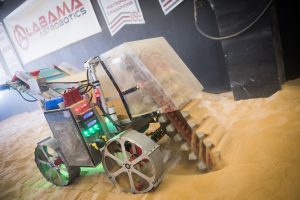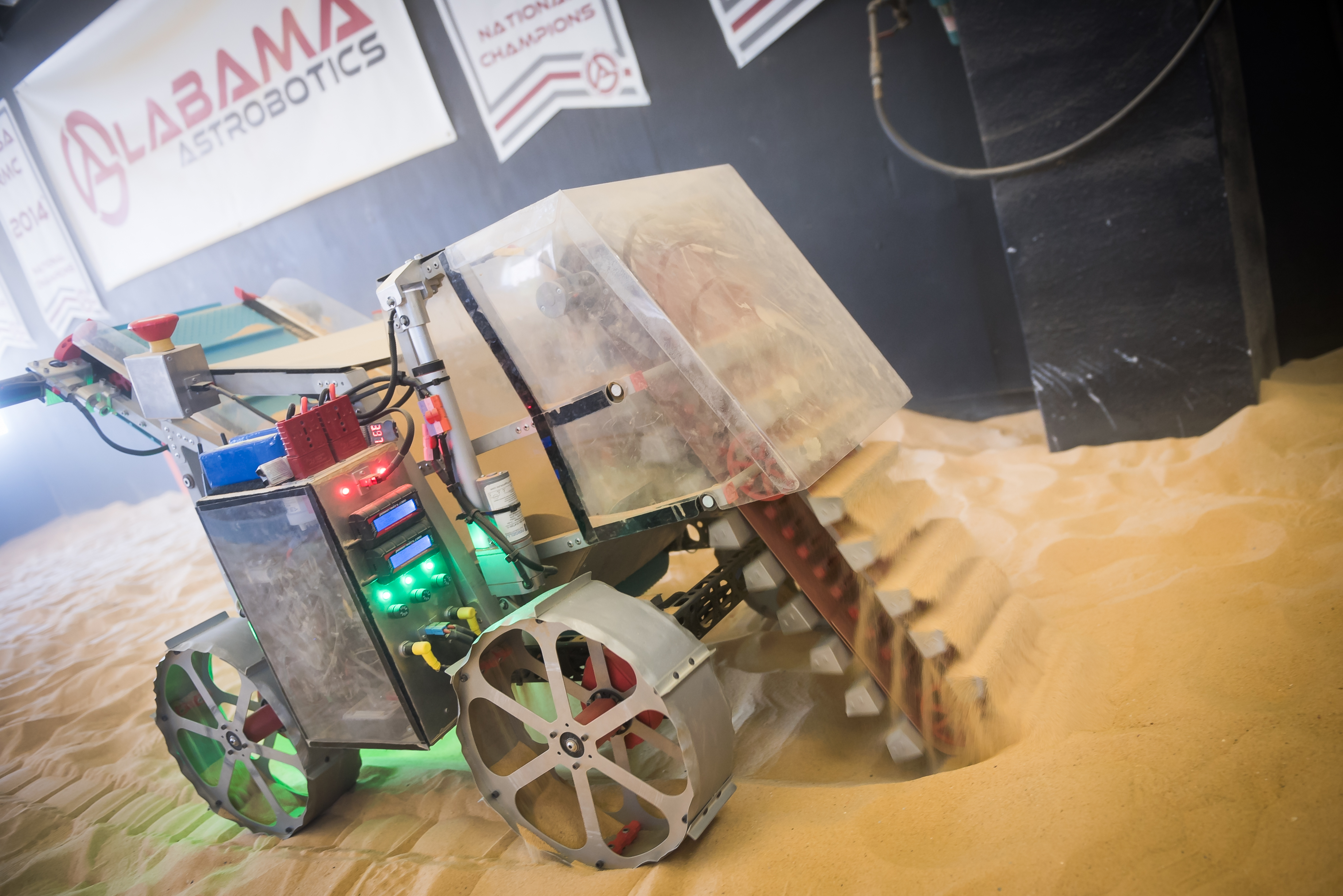
TUSCALOOSA, Ala. — After winning the top prize at a NASA robotics contest the past two years, a team of students at The University of Alabama returns to defend its title.
Made up of more than 60 students from across eight disciplines including engineering and computer science, Alabama Astrobotics is the only team to win consecutive years at the NASA Robotic Mining Competition. The event challenges student teams to build a robot capable of navigating and excavating simulated Martian soil.
The team has won three times during the competition’s seven-year history.
This year, the team brings a new, upgraded robot to compete against more than 50 teams at the contest that begins May 22 at Kennedy Space Center in Florida.
“Each year, winning the national championship gets more difficult as more and more teams gain experience in the competition,” said team lead Joseph Kabalin, a recent mechanical engineering graduate from Loveland, Ohio.
“This year we look forward to bringing what we believe to be the most competitive robot we have ever produced to the competition and, hopefully, return to Tuscaloosa victorious.”
As part of the competition, students are required to design a robot capable of navigating through and excavating 10 kilograms of simulated Martian regolith, a layer of loose material that covers a solid rock, and returning it to a collector bin. This simulates an off-world resource mining mission necessary to sustain a human outpost.
Robots are judged not only on how much simulated soil they can dig and deposit into bins but also on their ability to operate on their own, or autonomously.
In addition to the on-site mining category, teams must also submit an engineering paper that explains their design philosophy. The teams also get extra points for engaging in social media and outreach to local schools throughout the year, and they have the option of giving a presentation to judges while at Kennedy Space Center.
Points from all categories are tallied for the grand prize called the Joe Kosmo Award for Excellence.
The technology concepts developed by the collegiate teams for this competition could be used to mine resources on other planets, according to NASA.
The agency will benefit directly from the competition by encouraging the development of innovative excavation concepts from universities. The process may result in clever ideas and solutions that could be applied to an actual excavation device or payload.
Like every year, the team designed and built a new robot, but it is sticking with the approach that netted the top prize at the contest in 2015 and 2016. The students improved some of the robots mining capabilities, making it lighter and upgrading its ability to operate on its own, Kabalin said.
The robot is called MARTE 2017, which stands for the Modular Autonomous Robotic Terrestrial Excavator 2017, and keeps the bucket ladder excavator and an offloading conveyor belt. It also continues to use lidar sensors that can scan in 3-D using 16 lasers to measure distance and determine an object’s position, a sort of radar that uses light instead of sound.
This year the team installed an electronic device called an inertial measurement unit to help make the autonomy more reliable.
“Our 2017 design is a combination of the past three designs, and we believe it is the most competitive and optimized robot we have built to date,” Kabalin said.
As part of a required educational outreach component, members of Alabama Astrobotics have hosted outreach activities on campus during E-Day and game day tailgates as well as at Shelton State Community College.
Additionally, the team has worked with students at the RISE Center in Tuscaloosa to introduce science and technology concepts through hands-on activities.
The team received funding from the Alabama Space Grant Consortium, NASA, Dynetics, Fitz-Thors Engineering, Crank N Chrome, Ion Motion Control, Trailer Store Plus, SolidWorks and the University.
Alabama Astrobotics is advised by Dr. Kenneth Ricks, UA associate professor of electrical and computer engineering.
Contact
Adam Jones, UA media relations, 205/348-4328, adam.jones@ua.edu
